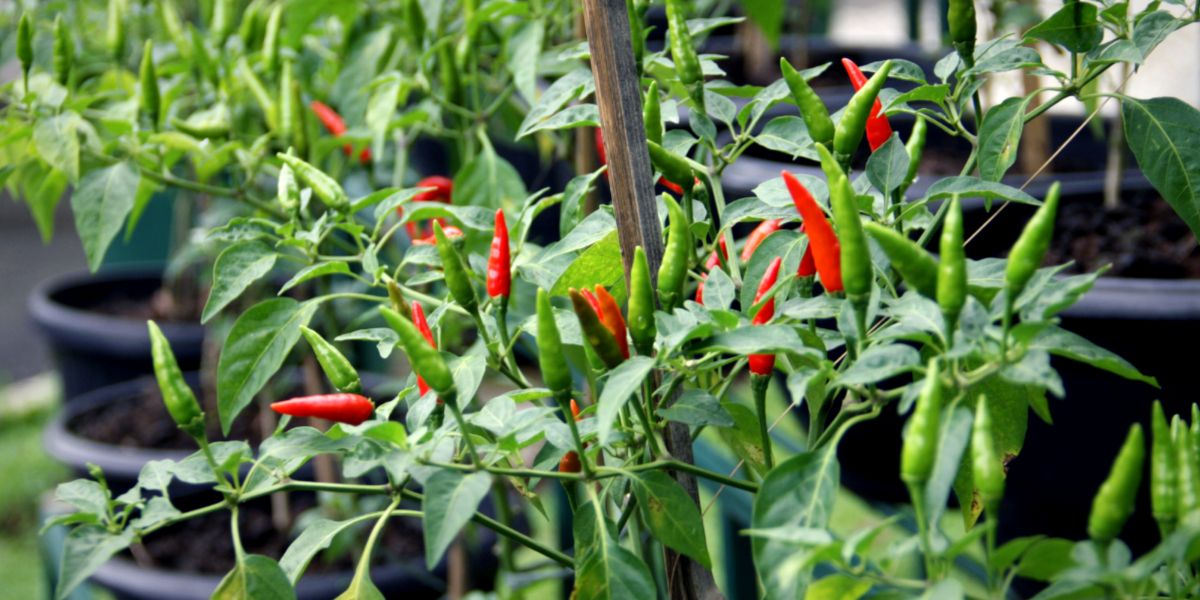How to Extend the Lifespan of Your Chili Pepper Plants

Chili pepper plants are known for their spicy fruits, which are used in a wide variety of culinary dishes and applications. While many chili plants are annuals, some can be grown as perennials in the right conditions.
In this comprehensive guide, we will explore various strategies and techniques to help you extend the lifespan of your chili pepper plants and maximize their productivity.
Are you a chili pepper lover who wants to learn how to grow chili pepper plants at home? Look no further! Click below to find out which must-have books will guide you through the process of growing your own chili peppers...
From proper watering and fertilizing to pruning and winterizing, we will cover all the essential aspects of caring for your chili plants to ensure they thrive for years to come.
Table of Contents
- Introduction: Understanding Chili Pepper Plant Lifespan
- Choosing the Right Variety and Growing Conditions
- Proper Watering and Fertilizing
- Pruning and Supporting Your Chili Plants
- Pollination and Fruit Production
- Disease Prevention and Treatment
- Overwintering Your Chili Plants
- Saving Seeds and Cloning Your Chili Plants
Introduction: Understanding Chili Pepper Plant Lifespan
The lifespan of a chili plant can vary depending on various factors such as the specific variety, growing conditions, and care provided. Some chili plants are easier to grow than others, but with the right knowledge and techniques, you can successfully cultivate and maintain your chili plants for an extended period. By optimizing their growing environment, you can significantly improve the health and longevity of your plants.
Choosing the Right Variety and Growing Conditions
Selecting the appropriate chili pepper variety is crucial to ensure a successful and long-lasting plant. There are numerous chili pepper varieties, each with its own unique characteristics, flavors, and heat levels. When choosing a chili plant, consider factors such as your climate, the space you have available, and your personal taste preferences.
Chili plants typically thrive in warm, sunny environments with well-draining soil. The optimal temperature for growing chilies ranges from 70°F to 85°F (21°C to 29°C). For those in colder climates, you can still successfully grow chili peppers by starting them indoors and moving them outside once the weather warms up. Alternatively, you can grow chili peppers indoors or in a greenhouse year-round.
Proper Watering and Fertilizing
Ensuring your chili plants receive the right amount of water and nutrients is crucial for maintaining their health and extending their lifespan. Overwatering can lead to root rot and other diseases, while underwatering can result in stunted growth and reduced fruit production. Ideally, the soil should be consistently moist but not saturated.
To promote healthy growth and fruit production, it's essential to provide your chili plants with the right nutrients. Utilize organic chili pepper fertilizers to nourish your plants naturally and sustainably.
Pay close attention to the pH levels and calcium content of your soil, as these factors can significantly impact the growth and development of your chili plants. Regularly test your soil and make adjustments as needed to ensure optimal nutrient availability.
Pruning and Supporting Your Chili Plants
Pruning your chili plants is an essential practice to encourage bushier growth, increase fruit production, and extend their lifespan. Regularly remove dead or yellowing leaves, and trim back leggy stems to promote new growth. During the growing season, pinch off the growing tips to encourage branching and a more compact form.
To prevent your chili plants from bending or breaking under the weight of their fruits, you may need to provide them with support. Use stakes, cages, or trellises to help your plants maintain an upright position, ensuring better airflow and reducing the risk of disease.
Pollination and Fruit Production
Chili plants typically self-pollinate, but in some cases, they may need assistance to produce fruit. If you notice that your chili plant is not producing fruit, consider hand-pollinating by gently tapping the flowers or using a small brush to transfer pollen from one flower to another.
Disease Prevention and Treatment
Maintaining the health of your chili plants is crucial for extending their lifespan. Be proactive in preventing and treating common chili pepper diseases by implementing good gardening practices, such as proper watering, providing adequate spacing between plants, and using disease-resistant varieties. Monitor your plants regularly for signs of pests or disease, and take prompt action to treat any issues that arise.
Overwintering Your Chili Plants
In colder climates, overwintering your chili plants can help extend their lifespan by protecting them from frost and freezing temperatures. Before the first frost, bring your plants indoors or move them to a greenhouse. Prune back the foliage and provide them with supplemental light if necessary. By overwintering your chili plants, you can enjoy a head start on the next growing season and potentially increase their overall lifespan.
Saving Seeds and Cloning Your Chili Plants
If you want to preserve the genetic traits of your favorite chili plants, consider saving seeds or cloning them.
Saving seeds allows you to grow new plants with the same characteristics as the parent plant, while cloning involves taking cuttings from a mature plant and rooting them to create an exact genetic copy. Both methods can help you maintain your favorite chili plants for years to come.
In conclusion, extending the lifespan of your chili pepper plants requires a combination of proper care, suitable growing conditions, and timely interventions.
By following the strategies and techniques outlined in this guide, you can successfully cultivate and maintain your chili plants for an extended period, ensuring a bountiful harvest of spicy fruits to enjoy for years to come.
For more in-depth information and resources on chili pepper cultivation, be sure to explore the wealth of articles available on chiligrowing.com.



